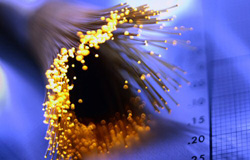Data Cabling Los Angeles
 Are you looking for a timely data cabling installation and located in Los Angeles? We have been servicing Los Angeles clients for over 10 years. Our lifetime warranties on data cabling give you the peace of mind you need. Data cables are very useful tools for transferring information. Anyone can install data cables by simply following a DIY guide. There are also professional installers who specialize in data cabling.
Are you looking for a timely data cabling installation and located in Los Angeles? We have been servicing Los Angeles clients for over 10 years. Our lifetime warranties on data cabling give you the peace of mind you need. Data cables are very useful tools for transferring information. Anyone can install data cables by simply following a DIY guide. There are also professional installers who specialize in data cabling.
Data Cabling Installation
Data cabling installation requires a good understanding of standards. This will give installers confidence that they are doing the right thing. It also ensures that they will not compromise the devices involved in the installation.
The first step in the procedure is software installation. The installation process starts right after the computer driver detects the software. The physical cables should also be tested. This step requires verification tools. Having Cat 6 cables and connectors does not necessarily ensure Cat 6 performance during the installation.
Certifying and verifying the cables is crucial for data cable installation. Certification only shows that the cable was installed properly. The final process is the use of qualification tools. This step allows the installers to test and record the cabling link.
Hardware Needed for Data Cabling Installation
Data cabling companies always do an initial site visit before they perform cabling installation. They can provide the hardware needed if it is not available onsite. This includes cabling, patch panels, data cabinets, repeaters, cable protectors, network switches, mini trunking, maxi trunking and dado trunking and firewalls.
Data Cabling Types
Category 5 enhanced cable or more commonly known as Cat 5e cable is a versatile copper cable that can handle speeds up to 1 Gb per second. It is relatively inexpensive and suitable for use with a home network or a small business network since it can be used in various lengths to connect with computers in different rooms. It is not a good choice for high rises as vertical issues and office lights can cause problems, plus it cannot handle the higher speed demands needed in more professional networks.
Category 6 Gb cable has increased shielding, which makes it easier to install near office lights and other sources of noise that affect a network. Cat 6 Gb is an improvement over cat 5e cable and can handle speeds of 1 Gb per second over 330 feet of cable or speeds up to 10 Gb per second at 180 feet of cable. Cat 6 Gb cable can be used for high rise networks but it is more expensive than cat 5e.
Category 6a 10 Gb is another cable that is a step above Cat 6 Gb. Cat 6a 10 Gb means category 6 augmented cable. It can handle speeds up to 10 Gb per second over 300 feet of cable. It has scalability, which allows it to be used in large networks and is a high performance cable suitable for use in server farms and data centers. It is more expensive than cat 6 Gb cable.
Different Types of Fiber Cabling
Multimode fiber cabling has a larger core than single mode fiber cable. This allows for more than one mode of light meaning more than one ray of light. These numbers are often seen when comparing multimode cables, 62.5/125. Both numbers refer to microns, with the larger number being the outside diameter and the smaller number being the inside diameter or the core. Multimode fiber cables can provide greater bandwidth and higher speed over relatively shorter distances than singlemode. Setting up a multimode fiber network is generally cheaper than setting up a singlemode network. It is reliable and commonly used in buildings where electronics can be centralized, thereby overcoming distance issues. The multimode fiber cabling is a little more expensive than singlemode cabling if both are bought in bulk, but the equipment needed to use multimode fiber is cheaper.
Singlemode fiber can be considered as just one size and type except for specialty applications, like submarine cables or very long haul telecommunications cables. The numbers usually seen with fiber optic cables look like this 9/125. Again indicating the small size of the core and the uniform size of the outer diameter in these cables. Singlemode cables give you much greater bandwidth and speed over a much greater distance. They are commonly used by telephone companies and cable television companies. The cost of singlemode fiber is considerably higher than multimode fiber.
Om1 fiber optic cable is a standard 62.5/125 micron multimode cable. It is common and a popular choice for indoor networks.
Om2 fiber optic cable is a different standard multimode cable similar to Om1 except it measures 50/125. It has become a very popular choice for networks itself.
Om3 fiber optic cable is another standard for multimode cable. It measures 50/125 and is used for 10Gbps networks. It is available for indoor and outdoor use.
OS1 fiber optic cable is a singlemode cable standard measuring 9/125. Commonly used in WAN and telecommunications. It can be used indoor and outdoor.



